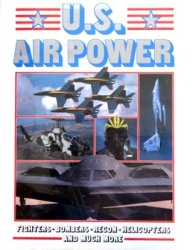By the spring of 1979, however, America’s triumph over Soviet-backed revolutionary nationalism in Egypt looked more and more like a pyrrhic victory. While Nixon, Ford, and Carter were building an unprecedented partnership with Sadat, the Soviets were strengthening their ties with Arab radicals. Indeed, during the 1970s, the Kremlin established a military alliance with Saddam Hussein’s Iraq, restocked the Syrian arsenal that Hafez al-Assad had squandered in his ill-advised war against Israel, and endorsed the PLO as the sole legitimate representative of the Palestinian people. Moreover, while the Americans and Soviets jockeyed for position among Arab moderates and radicals, both Washington and Moscow faced new challenges from an unexpected quarter - radical Islam. For many devout Muslims, Nasser’s defeat in the June 1967 war was proof of the bankruptcy of his secular model of reform through Westernization, and by the mid-1970s an Islamic revival was underway throughout the region. In Egypt, the resurgent Muslim Brotherhood, a Sunni group whose top leaders had been executed by Nasser, challenged the legitimacy of Sadat’s one-party state, while in Lebanon the downtrodden Shi’a Muslims took up arms against the American-backed Christian-led regime in Beirut. Meanwhile, the Muslim populations of Soviet Central Asia were growing restless after six decades of Communist rule and Islamic guerrillas were mobilizing against the Kremlin-backed regime next door in Afghanistan.
The hotbed of the Islamic revival, however, was Iran, where Shi’a clerics loyal to the exiled Ayatollah Ruhollah Khomeini preached increasingly vitriolic sermons against the Shah, whose pro-Western "White Revolution" they regarded as antithetical to the principles of Islam.
The impending crisis undermined one of the key operating assumptions of American policymakers, who expected Iran to fill the strategic vacuum in the Persian Gulf after Britain relinquished its empire east of Suez in 1971. To this end, the Nixon and Ford administrations sold the Shah nearly $ii billion in US weapons, paid for with rising oil revenues generated by the OPEC price hikes following the October 1973 war. In September 1978, the American-equipped Iranian army fired into a crowd of pro-Khomeini demonstrators in Tehran, leaving 400 dead and 4,000 wounded. Five months later, a full-blown Islamic revolution forced the Shah to seek asylum in Egypt while Khomeini returned home in triumph, vowing to settle old scores with America, which he labeled "the Great Satan." Islam, which US officials had touted as the antidote to Soviet subversion in the Middle East just two decades earlier, had suddenly become more dangerous to American interests in the region than Communism.430
From the Suez crisis through the Camp David Accords, the US strategy in the Middle East remained quite consistent. Determined to protect Western access to Persian Gulf oil and promote the security of Israel, Washington sought to reduce Moscow’s influence in the region and combat pan-Arab radicalism from Cairo to Damascus. American tactics varied from administration to administration. Eisenhower sent the Marines into Lebanon, Kennedy wooed Egypt with economic aid, and Johnson recruited Israel as a partner in the battle against national liberation movements in the Third World. Nixon, Ford, and Carter each hoped that some variant of Soviet-American detente would prevent the increasingly volatile region fTom becoming the central arena of the Cold War during the 1970s.
Soviet policies toward the Middle East, by contrast, shifted in noticeable ways during the quarter-century after the Suez Crisis. Long before he was removed in an October 1964 palace coup, Khrushchev realized that Nasserism, Ba’athism, and other forms of Arab nationalism could be antiWestern without necessarily being pro-Soviet. Brezhnev and Kosygin were appalled by Nasser’s catastrophic defeat in June 1967, stunned by Sadat’s expulsion of Soviet advisers from Egypt five years later, and frustrated by their virtual exclusion from the American-backed Arab-Israeli peace process after the October 1973 war. By the late 1970s, Moscow’s bold embrace of wars of national liberation throughout the Arab world had been reduced to a series of spoiling operations mounted by unreliable clients like Iraq, Syria, and the PLO. More importantly, both Soviet and American officials had become so preoccupied with their superpower rivalry that they paid far too little attention to regional dynamics and underestimated the significance of the emerging threat represented by radical Islam.




 World History
World History









